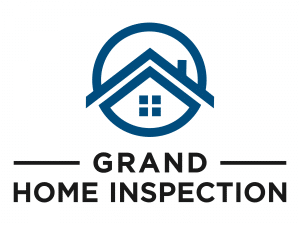As a home inspector I talk to a lot of home buyers, and one of the biggest concerns people have is the condition of the roof. Nobody wants water dripping on them every time it rains, moisture intrusion can cause all kinds of damage, and let’s face it, roofs are expensive! People are always asking me about the age and condition of the shingles, but they often overlook the fact that the roof is an entire system composed of multiple components that must work together in order to keep the water out.
For a roof to do its job, everything must be installed correctly, and since it’s fairly easy to get into the roofing business, there are a lot of roofs out there installed by inexperienced contractors with questionable craftsmanship. Even a brand new roof can leak if it was hastily installed or shortcuts were taken.
Above you can see two chimneys that represent a common shortcut taken on both new roofs and repairs. Any time there is a penetration in the roof or the surface of the roof changes direction at an angle, the two surfaces should be protected by flashing. Flashing is a mechanical barrier, often made of aluminum, that fits into the angle and prevents water from entering at the seams. Flashing can stand up to UV light and other hazardous conditions the roof will experience, so it creates the best possible protection. The chimneys pictured above should have L shaped metal flashing covering the angle between the chimney and the roof plus counter-flashing inserted into the masonry, but instead they only have tar.
Exposure to UV light and the constant expanding and contracting of materials caused by temperature changes is sure to make tar and other sealants crack, peel, and generally fail. Tar, caulk, and other sealants cannot withstand the harsh conditions of the outdoors. When sealants fail, water is sure to find its way in. Both houses from the pictures shown above had leaky roofs.
When it’s time for a new roof, be sure to talk to several contractors and make sure they will do a proper installation including flashing at all roof penetrations and angles. If tar was used in place of flashing anywhere on your home, be sure to have it corrected by a qualified contractor before the problems start, because they definitely will!

How WDO Inspections Protect Your Property’s Value
Many homeowners don’t consider getting a wood-destroying organism (WDO) inspection unless they are selling their home. However, these are the inspections that protect your property from depreciation. The WDO inspection benefits can never be understated. These inspections provide detailed and useful insights into your property to confirm if it’s ever been under a WDO attack. […]
How Air Quality Tests Can Pinpoint Mold in Your Home
You can’t expect anything good from mold. That’s obvious. But its adverse effects come as a surprise – both on health and at home. Mold is a pollutant affecting your home and family. When it comes to health issues, it causes respiratory issues, allergies, infections and asthma attacks. Mold is also responsible for wood decays, […]
How Seasonal Pool Inspection Can Save You Money in the Long Run
Your poolside paradise needs protection! You must have imagined a summer full of poolside relaxing moments, sipping your pina colada, and having the best time ever. But, pause this rejuvenating plan for a bit and imagine what if the blessing in disguise – your pool starts experiencing some unseen issues? Which later affects its safety […]